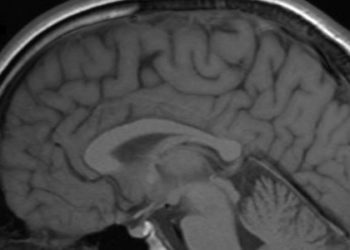Blood brain barrier permeability may predict infarct after hemorrhage
1. Computed tomography perfusion imaging suggests that patients with delayed cerebral ischemia after subarachnoid hemorrhage had an increase in the permeability of the blood brain barrier (BBB) prior to the development of infarct shortly after the time of hemorrhage.
Evidence Rating: 3 (Average)
Study Rundown: Particularly among patients with ruptured cerebral aneurysms, delayed cerebral ischemia (DCI) after subarachnoid hemorrhage (SAH) may lead to significant morbidity and remains the primary cause of death and subsequent disability following SAH. Unfortunately, screening remains difficult given the limitations of current detection tools both clinically and radiographically. Computed tomography perfusion (CTP) is used to derive the mean transit time (MTT), cerebral blood flow (CBF), and cerebral blood volume (CBV), which all help in evaluating the presence of DCI. CTP can also be used to evaluate the permeability surface area product (PS), a surrogate for the blood brain barrier permeability, which is believed to increase during ischemia or other stresses such as malignancy or infection. In this study, patients with DCI after SAH had increased permeability surface product prior to infarction when compared to contralateral controls. This suggests that CTP can be used to stratify the risk of delayed infarction in patients with SAH based on their permeability surface product, identifying those that may benefit most from early intervention. This study was limited by its retrospective nature and relatively small size, and would benefit from a larger prospective evaluation of all SAH patients to determine the chronicity of PS and development of DCI. Additionally, determination of the value of early recognition of at-risk patients is warranted with regard to intervention planning.
Click to read the study in American Journal of Neuroradiology
Relevant reading: Evaluating CT Perfusion Using Outcome Measures of Delayed Cerebral Ischemia in Aneurysmal Subarachnoid Hemorrhage
In-Depth [case-control study]: A total of 21 patients underwent retrospective review after being prospectively selected for a diagnostic accuracy trial. Patients were determined to have SAH based on standard expert consensus criteria, and were included in the study if they developed subsequent DCI and had CTP and PS imaging performed prior to infarct development. Contralateral cerebral territories were used as controls in evaluation of the permeability surface area product. CTP was performed after aneurysmal rupture within day zero (range, 0-3 days, and 71% [15/21] undergoing CTP on day 0 of admission). A total of 19 out of 21 patients (90%) had unchanged clinical examinations at the time of pre-infarction CTP. There was an increase in PS within the same region of subsequent infarction on the preinfarct CTP as compared to the contralateral region in 96% of patients (22/23, p < 0.0001). There was no statistical difference in CBF and MTT values in infarct areas when compared to their contralateral controls.
Image: PD
©2015 2 Minute Medicine, Inc. All rights reserved. No works may be reproduced without expressed written consent from 2 Minute Medicine, Inc. Inquire about licensing here. No article should be construed as medical advice and is not intended as such by the authors or by 2 Minute Medicine, Inc.


![The ABCD2 score: Risk of stroke after Transient Ischemic Attack (TIA) [Classics Series]](https://www.2minutemedicine.com/wp-content/uploads/2013/05/web-cover-classics-with-logo-medicine-BW-small-jpg-350x250.jpg)



![Endostatin directly binds androgen receptors to treat prostate cancer [PreClinical]](https://www.2minutemedicine.com/wp-content/uploads/2015/01/Endostatin-75x75.jpeg)